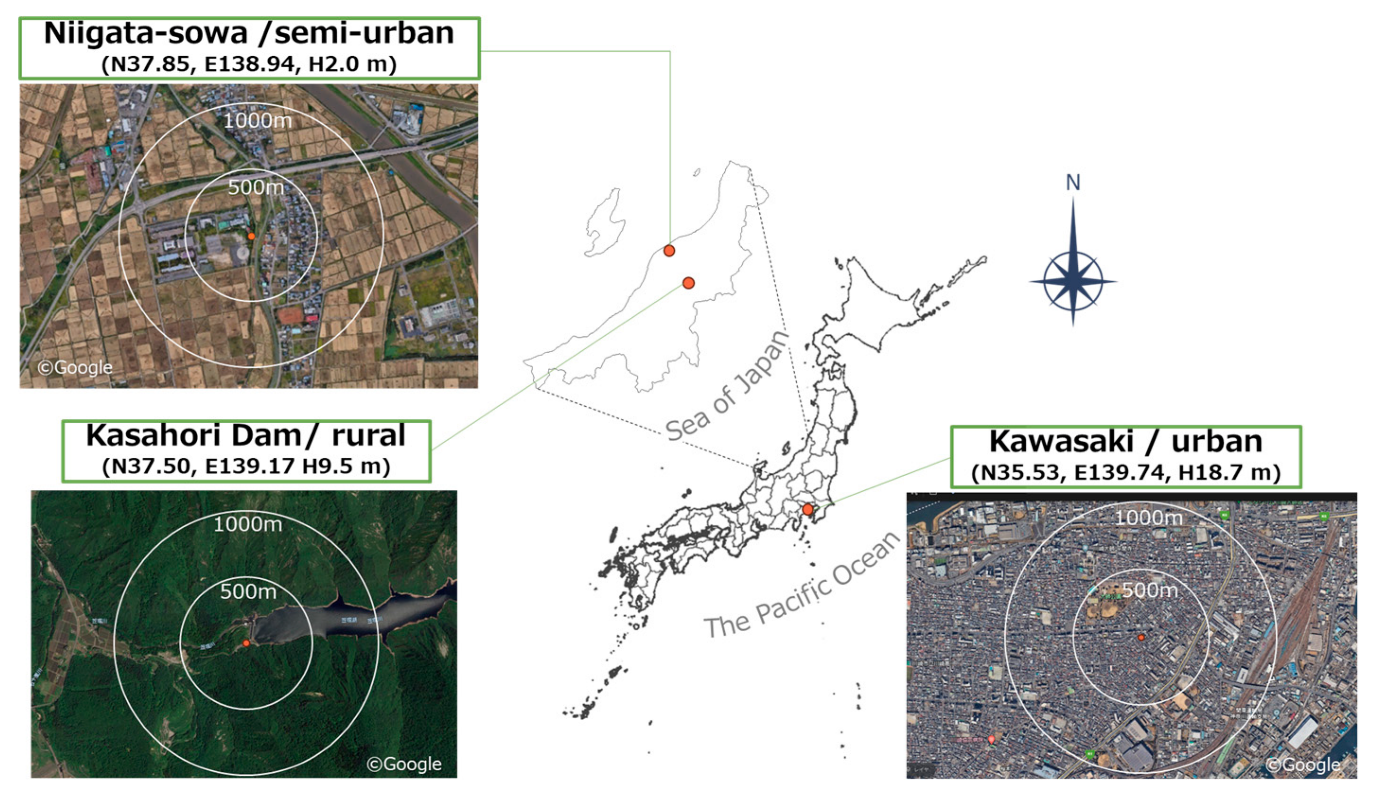A research team led by Mr. Hiroyuki Sasaki, Senior Researcher at the Asia Center for Air Pollution Research (ACAP), has published a peer-reviewed paper in the journal Atmosphere on October 22, 2025.
The paper is open access and freely available online.
Publication details
Journal: Atmosphere, Volume 16 (11), Article No. 1222 (2025)
Title: Airborne Microplastics: Source Implications from Particulate Matter Composition
Authors: Hiroyuki Sasaki, Tsukasa Takahashi, Mari Futami, Tomomi Endo, Mizuho Hirano, Yuka Kotake, and Kim Oanh Pham
Link: https://doi.org/10.3390/atmos16111222 (Open a new window)
From November 2023 to October 2024, the research team collected Airborne Microplastics (AMPs) seasonally at three sites in Japan representing different environmental settings. The samples were analyzed using a micro-Raman spectrometer, identifying a total of 106 AMPs. The dominant polymer types were polyethylene (PE), polyethylene terephthalate (PET), and polyamide (PA), though the composition varied among sites.
The most frequent particle size (major axis) ranged from 4 to 6 μm, and fragment-shaped particles accounted for the largest proportion. The number concentrations of AMPs showed strong correlations with the mass concentrations of certain particulate matter (PM) components, which differed among sites. These results suggest that AMPs are influenced by local emission sources. In contrast, the relatively small site-to-site variation in AMP concentrations compared to major PM components implies that the atmospheric behaviors of AMPs and PM are not always identical.
This study was supported by the Japan Society for the Promotion of Science (JSPS) KAKENHI Grant JP23K11468. The authors express their sincere gratitude to Professor Hiroshi Okochi and members of Waseda University for their valuable technical advice. The Niigata Industrial Technology Research Institute kindly provided the micro-Raman spectrometer, and the Kasabori Branch Office of the Sanjo Regional Development Department, Niigata Prefectural Government, provided the sampling facilities.

Figure 1. The locations of the three sampling sites (Kawasaki: urban, Niigata-sowa: semi-urban, Kasahori Dam: rural) and satellite imagery of their surrounding areas.

Figure 2. Breakdowns of AMP polymer types for the total and individual sampling sites. Except for the commonality that PE (polyethylene) was the most prevalent at every site, the breakdown differed by site.

Figure 3. Box and whisker plots of the mass concentration ratio of Pb in PM2.5 to Cu in PMc (Pb2.5/Cuc) at each site. The location difference was shown to be statistically significant.